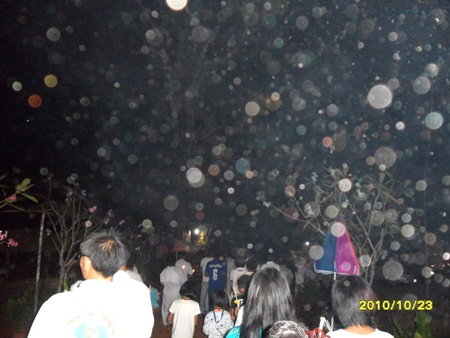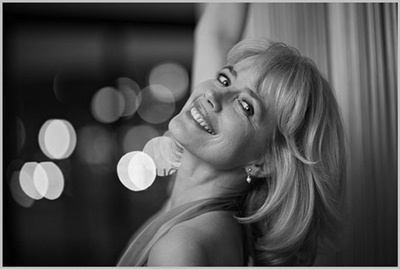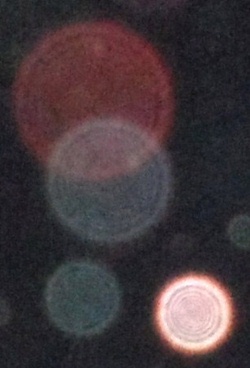
Circles at the Buddhist ceremony.

Circles of confusion.
There is a photographic term called the Circle of Confusion, which is really just an optical one – but still confusing.
With Circles of Confusion you must first understand that light is reflected off any subject in all directions. Your camera gathers all the light rays from each point on the subject which are reflected toward the camera and fall within the circle created by the opening of the diaphragm. Think of this as a cone of light which has its apex at the point of reflectance on the subject and it’s circular base in the diaphragm opening.
 More circles.
More circles.
In turn, this cone of light is focused on the digital sensor “film” plane in the camera. If the lens is doing its job correctly, then each point reflected from the subject becomes a sharp point in the camera.
Now this is where it all gets a little tricky. If, for example, the lens cannot keep the exact focus point on the sensor “film” plane, some areas will have the points recorded as circles, and these can be known as Circles of Confusion. This is also known as ‘spherical aberration’ and cheap lenses will show this far more than expensive lenses which have many lenses as a combination, with lenses selected that counteract aberrations in each element. In this situation, the circles should also all be of the same size. These are also known as ‘Blur circles’.
This is also tied up in ‘sharpness’ or ‘softness’, as if there are many (very small) circles this appears in the final photograph as an in-focus print.
Adding to this confusing situation is the fact that the diameter of the circles relates to the diameter of the aperture. A small aperture, like say f22 produces small circles, so the photograph appears “sharper”, while a large aperture, such as f4, produces larger circles and so the photograph is ‘softer’. This is why small apertures should be selected when looking for ultimate sharpness in a photo. This would also mean that the circles should be of the same size, as they are related to the aperture.
Now I have included two illustrations of circles in these photographs, which may, or may not be circles of confusion. They were taken with a Samsung compact with 12 MP and the event was a religious ceremony in Isaan. Note that the circles vary in size, and some are overlying the physical subjects.
According to the Buddhist belief, many spirits were called to the event and believers are happy to ascribe the circles to a visitation by spirits not visible to the naked eye.
Similar shots, taken at night with the same camera, but at a different location do not show the circles.
So what have we got here? Blur circles? Circles of confusion? The spirit world encircling us? I am interested in your response.




